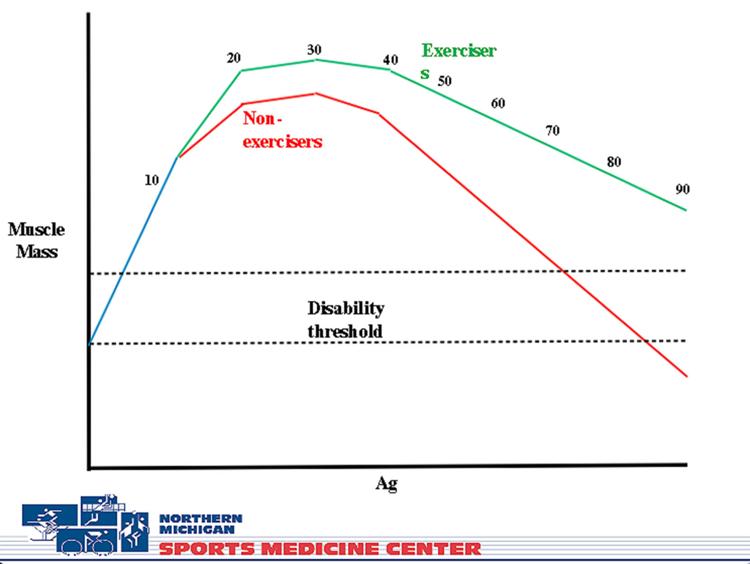One of the most common concerns I hear from my physical therapy patients in their 60s, 70s and 80s goes something like this:
“I just feel like my body quits on me before my mind does. I can’t keep up with the younger guys I ride with” or “when I’m golfing with the ladies, I just can’t hit the ball like I used to.”
What these patients describe as a reduction in performance is often due to an age-related change to the musculoskeletal system of the body called sarcopenia.
Sarcopenia is defined as a syndrome characterized by progressive and general loss of skeletal muscle mass and strength and it is strictly correlated with physical disability, poor quality of life, and death.
Sounds scary doesn’t it? Instead of being afraid of sarcopenia, I prefer that people respect but not fear it. It’s kind of like your taxes due on April 15 every year; you know they’re coming, but there are usually steps you can take to make them sting a little less.
According to the Journal of the American Geriatric Society, “muscle mass decreases approximately 3—8% per decade after the age of 30 and this rate of decline is even higher after the age of 60”.
In the past several years, numerous studies have found that people with higher muscle strength are less likely to lose their independence than their weaker peers.
An interesting study in the Journal of Gerontology found the stronger an individual’s grip strength, the lower was their overall mortality. Grip strength has been shown to be a decent corollary to overall strength.
It therefore makes sense that if you have a strong desire to maintain your independence and performance as you age, keeping your body strong is one of the most important things to work on.
The great news is that regardless of your fitness level, there’s always room for improvement.
I included the graph with this column because I’m a visual learner by nature, and I bet many of you are as well. I think it nicely shows that while losing muscle strength is a normal part of the aging process, people who exercise regularly do a much better job of minimizing that loss.
Your goal should be keeping yourself out of that dreaded disability zone. When our function degrades into that zone, it reflects a loss of independence.
For some, that loss may mean relying on a walker or wheelchair to get around. For others, it could mean no longer being able to keep up with the younger folks on the last part of your ride or upping your golf handicap a bit. Regardless of your choice in leisure activities, your goal should be to stay out of the disability zone.
If you currently exercise on a regular basis, give yourself a pat on the back! You’ve already taken the first step. The next step is to try to keep yourself from getting too entrenched in a routine, to the point that your exercise is no longer much of a challenge.
If you don’t currently exercise on a regular basis, perhaps this article has given you some motivation to get started. After you’ve been cleared to start exercising by your health care provider, a conversation with a physical therapist or athletic trainer is a great way to figure out your current fitness level and find a type of exercise that’s a good fit.
While walking, biking, and golfing are good ways to stay active, be sure that some form of strength training is also part of your routine at least a couple times each week.







